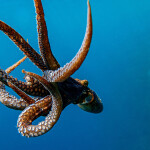Members of the International Commission for the Conservation of Atlantic Tunas met in Bilbao, Spain last week, and the bigeye tuna assessment was a key topic of discussion.
Dr. David Die, chairman of the commission’s Standing Committee Research and Statistics, presented a report to officials from the 18 member nations who attended the intersessional meeting from 23 to 25 July. The report indicated that the total allowable catch for bigeye was exceeded by 23 percent in 2016, and projections estimated 76,982 tons were caught in 2017.
If that holds true, and the committee looks to finalize the report in October, then the stock was overfished by 18 percent last year.
Die told members that the assessment shows the bigeye stock is overfished and subject to overfishing. According to an ICCAT meeting summary, the committee has great confidence in the modeling used to make the assessment because it had more data available than previous assessments and was able to account the size selectivity of member fleets.
The assessment also noted that while longline and baitboat fisheries saw reductions in their bigeye catches, fisheries using other gears saw increases.
Die and other members of the SCRS will gather in Madrid, Spain in early October to make recommendations for the commission on bolstering the bigeye stock. ICCAT will meet the following month in Dubrovnik, Croatia to discuss and potentially act on revising a bigeye rebuilding plan that currently has a 49 percent chance of success by 2028, based on current catch levels.
The SCRC noted such actions as a moratorium on fish aggregating devices would improve the rebuilding plan’s chances.
Conservation groups who have pushed ICAT members to take stronger action to rebuild the bigeye stock were pleased with the discussions held in Spain, especially since the rebuilding measures the organization adopted three years ago have not been effective in reducing the number of younger fish harvested.
“This week’s dialogue was a marked improvement from previous years, and ICCAT members must build on the positive momentum from their conversations to honor their commitment to sustainably manage the bigeye stock,” said Grantly Galland, a tuna conservation campaign officer with Pew Charitable Trust. “Through a two-pronged approach to lower overall catch and minimize the impact on juvenile fish through measures to better manage fish aggregating devices, ICCAT can implement a new and successful recovery plan, and ensure the long-term health of the fish and its fisheries.”
Die was asked if additional steps taken to improve bigeye tuna would also help other stocks, such as yellowfin. He responded by saying some steps could lead to an increase in yellowfin harvested, and while some in attendance expressed concerns about managing multispecies fisheries, Die said the management strategies evaluation process can help fishery managers understand the impact conservation measures may have on all stocks.







